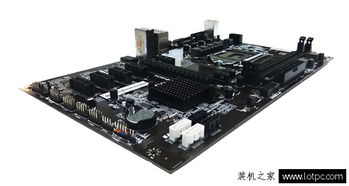In recent years, the cryptocurrency landscape has undergone a profound transformation, driven by growing environmental concerns and a collective push towards sustainability. Traditional mining practices, notorious for their high energy consumption, have come under scrutiny, particularly with Bitcoin’s meteoric rise leading to massive carbon footprints. Yet, amidst this challenge, a beacon of innovation emerges: eco-friendly mining. This shift isn’t just a trend; it’s a necessary evolution, blending technological advancement with ecological responsibility. As companies specializing in mining machines and hosting services pivot towards greener alternatives, enthusiasts and investors alike are discovering that profitability and planet-friendly practices can coexist harmoniously.
At the heart of eco-friendly mining lies the adoption of energy-efficient hardware and renewable energy sources. For instance, advanced mining rigs designed with low-wattage components can drastically reduce power usage without sacrificing hash rates. Bitcoin, as the pioneer of cryptocurrencies, has been at the forefront of this change, with its network adapting to more sustainable protocols like the Lightning Network to ease the burden on global energy grids. These developments not only mitigate environmental impact but also appeal to a new wave of eco-conscious miners who seek to align their investments with their values. Imagine vast mining farms, once symbols of excess, now powered by solar panels and wind turbines, transforming barren lands into hubs of green innovation.

Dogecoin, often seen as the fun-loving underdog in the crypto world, has surprisingly contributed to this eco-friendly narrative. Originally based on a proof-of-work system similar to Bitcoin, Dogecoin’s community has advocated for shifts towards proof-of-stake models, which require far less electricity. This adaptability highlights how even meme-inspired currencies can evolve, encouraging users to explore hosting options for mining machines that utilize clean energy. By partnering with hosting providers, miners can offload the complexities of setup and maintenance, ensuring their operations run on verified green energy sources. The result? A more diverse ecosystem where cryptocurrencies like Dogecoin thrive without the guilt of excessive resource depletion.
Ethereum’s transition to Ethereum 2.0 marks a pivotal moment in sustainable mining practices. Once reliant on energy-intensive mining, this upgrade to a proof-of-stake framework slashes energy consumption by up to 99%, making it a model for other blockchains. For miners accustomed to traditional rigs, this means investing in versatile equipment that supports both proof-of-work and proof-of-stake networks. Companies offering mining machine sales and hosting are capitalizing on this by recommending hybrid miners—devices that optimize for efficiency and adaptability. Suddenly, the mining farm becomes not just a profit center, but a testament to technological foresight, where every transaction contributes to a greener future.
Delving deeper, the role of specialized miners and mining rigs cannot be overstated in this eco-revolution. A typical miner, once a bulky, heat-generating beast, is now engineered for silence and efficiency, incorporating advanced cooling systems and AI-driven power management. These innovations ensure that even in remote mining farms, operations remain sustainable. For example, a state-of-the-art mining rig might integrate with solar arrays, automatically scaling back during peak sunlight hours to harness natural energy. This level of sophistication not only boosts yields for currencies like Bitcoin and Ethereum but also opens doors for newcomers in the crypto space, making mining accessible without the environmental trade-offs.

As exchanges continue to list an array of cryptocurrencies, from Bitcoin to Dogecoin and beyond, the demand for sustainable practices intensifies. Hosting services play a crucial role here, providing secure, eco-certified facilities where miners can rent space for their machines. This model reduces the individual carbon footprint by centralizing operations in optimized locations, often near renewable energy plants. The burst of activity in this sector underscores a broader market shift: investors are no longer content with mere returns; they crave ethical investments that promise longevity. By recommending equipment tailored for these needs, companies are not just selling products—they’re fostering a movement towards a balanced, thriving crypto ecosystem.
In conclusion, the rise of eco-friendly mining represents a harmonious blend of innovation, responsibility, and opportunity. With recommended equipment ranging from energy-efficient miners to adaptable rigs, the path to sustainable practices is clearer than ever. Cryptocurrencies like Bitcoin, Dogecoin, and Ethereum are leading the charge, proving that profitability and planetary health can go hand in hand. As we look ahead, embracing these changes will not only secure the future of mining but also inspire a new generation to engage with the crypto world thoughtfully and passionately.
Leave a Reply to Elena Cancel reply